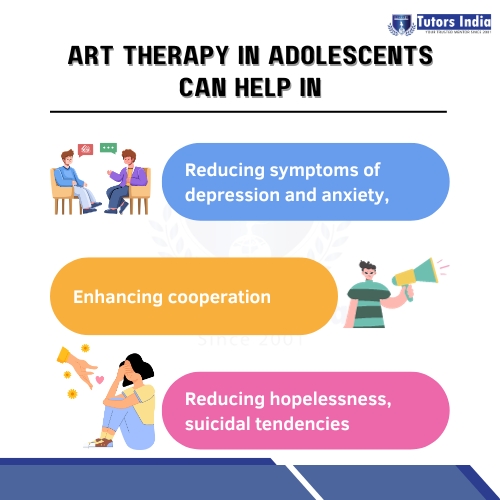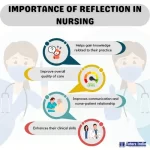Exploring the Use of Art Therapy for Adolescents with Mental Health Conditions
Art as a form of psychotherapy
Art therapy is a strategy that involves creative expression to assist people in exploring emotions, developing self-awareness and insight into life experiences, overcoming stress, increasing self-esteem, and improving social skills. The modes of creative expressions include various forms of art, such as, painting, drawing, sculpting, music, dance, and theater.
This form of therapy is commonly employed when working with individuals who have experienced abuse, both children and adults. Its effectiveness relies on the distinct elements of the artistic approach. Recently, there has been a surge of interest among mental health experts in prescribing art therapy to persons suffering from mental illnesses as a form of non-drug interventions, especially after the COVID-19 Pandemic (Razali, 2021).
Mental Health Conditions in adolescents
Most mental health conditions manifest themselves during childhood and adolescence. 75% of mental problems begin before the age of 25, with 50% beginning before the age of 14. Besides the suffering and impairment caused by mental diseases, they can have a disruptive effect on academic attainment, personal relationships, and job market stability, resulting in negative social and financial implications that endure into adulthood. Negative consequences affect individuals not only during their mental disease experience but can also influence their mental health trajectory later in life (Freţian,2021).
Research on using Art Therapy for Adolescents

- Research by Bokoch (2020) revealed that Mindfulness and Art Therapy Group Programs (MATG-P) were effective in developing empathic attunement. Moreover, Mindfulness and Arts Therapy Group Programs could help in reducing depression and anxiety.
- Zeevi (2021) explored the use of Virtual Reality (VR) as a form of Art Therapy in adolescents. Adolescents are more comfortable with using Technology and can use technology for expressing their feelings. VR Technology can be used for the explanation of non-verbal exploration and expression of unconscious content. This study reveals that Virtual Reality can be used as a form of art therapy in non-cooperative adolescents.
- Liu (2021) conducted a bibliometric analysis on the use of art therapy in addressing mental health conditions of individuals belonging to various age groups. In adolescents Group Art Therapy was found to be more effective form of treatment. Combined with respiratory therapy, group art therapy can significantly improve the human and emotional aspects of adolescents. Furthermore, for suicidal teens, Art Therapy can help reduce hopelessness, suicidal determination, and Post Traumatic Stress Disorder (PTSD) symptoms.
Future Research Directions
A literature review on the use of art therapy revealed some gaps, such as, the complexity of the topic and overemphasis on empirical studies, which could miss the findings of opinion papers that can offer valuable insights, giving rise to the future research directions:
- A study on the Knowledge Attitude and Practices of support groups on Art therapy
The study topic is based on the knowledge gap of research by Zubala et al. (2021). Knowledge of the various forms of art therapy can help support groups to determine the best one specifically targeted for adolescents.
- A study on the Knowledge of Art therapy among Psychology students
While Art therapy has gained attention as an adjunct to conventional pharmacotherapy, study could be done on the knowledge of Art therapy among psychology students, which will help them hone their professional skills (Hu, 2021).
Conclusion
Art therapy is a potent tool for boosting mental health, especially in adolescents who are experiencing emotional disturbances and psychological distress. Art therapy’s intrinsic creative expression serves as a critical tool for individuals to examine their emotions, improve self-awareness, and cope with stress. It’s becoming more widely recognised as a useful non-drug intervention, with new applications emerging during the COVID-19 pandemic. Adolescents frequently have mental health problems, which impair not only their current well-being but also their future chances. Various art therapy approaches, ranging from mindfulness and group programmes to technologies like virtual reality, have been demonstrated in studies to be successful. Addressing knowledge gaps and increasing awareness of art therapy among support groups and psychology students will be critical in the future for improving its use in the treatment of mental disorders.
About Tutors India
We are a team of experienced researchers and academic writers who understand the challenges students face while writing a literature review. We assist with the systematic analysis of the existing literature on a subject, which helps in the gap identification and validate the dissertation topic. We exercise caution and help students develop a well-structured literature review, which abides by the university guidelines and ensure they are well- structured, plagiarism-free and error-free.
To know more about how a literature review is written in various domains, check out our literature review examples.
References
- Razali, S., 2021. Art therapy for people with mental illness: overview of the evidence from empirical research on the effectiveness of the treatment. International Journal of Art and Design (IJAD), 5(5).
- Freţian, A.M., Graf, P., Kirchhoff, S., Glinphratum, G., Bollweg, T.M., Sauzet, O. and Bauer, U., 2021. The long-term effectiveness of interventions addressing mental health literacy and stigma of mental illness in children and adolescents: systematic review and meta-analysis. International journal of public health, 66, p.1604072.
- Bokoch, R. and Hass-Cohen, N., 2021. Effectiveness of a school-based mindfulness and art therapy group program. Art Therapy, 38(3), pp.117-126.
- Shamri Zeevi, L., 2021. Making art therapy virtual: integrating virtual reality into art therapy with adolescents. Frontiers in Psychology, 12, p.584943.
- Liu, Z. et al.(2021) ‘An Investigation into Art Therapy Aided Health and Well-Being Research: A 75-Year Bibliometric Analysis’, International Journal of Environmental Research and Public Health, 19(1), p. 232.
- Zubala, A., Kennell, N. and Hackett, S., 2021. Art therapy in the digital world: An integrative review of current practice and future directions. Frontiers in Psychology, 12, p.595536.
- Hu, J., Zhang, J., Hu, L., Yu, H. and Xu, J., 2021. Art therapy: a complementary treatment for mental disorders. Frontiers in psychology, 12, p.3601.

 Previous Post
Previous Post